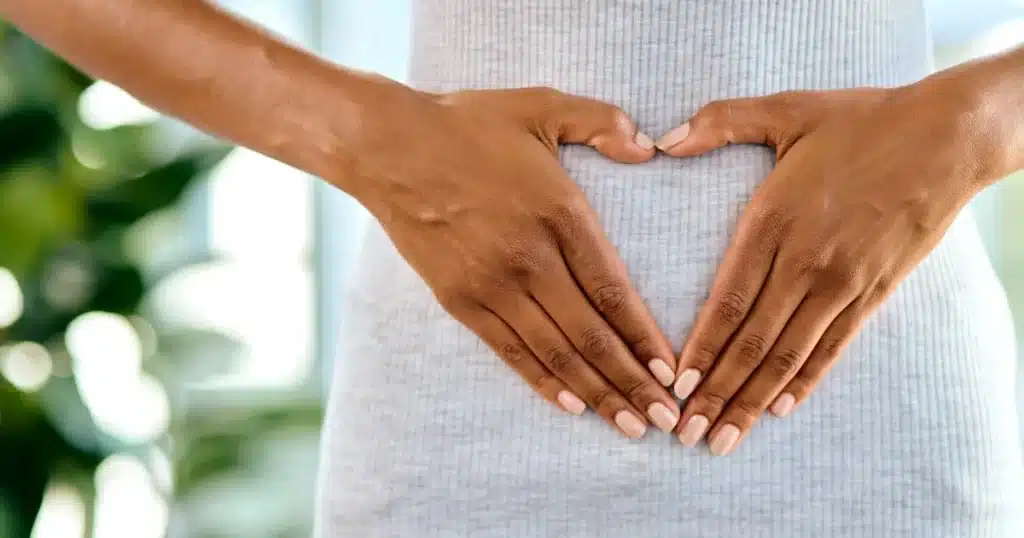RUNNING →
Level Up Your Nutrition Game With Our Freebies
Alex
I provide nutrition coaching for endurance athletes to improve performance and body composition through a simple and flexible eating style.
Hi, I'm
ATHLETE EATING GUIDE →
PROTEIN →
TRIATHLON →
RECIPES →
PERFORMANCE NUTRITION →
SUPPLEMENTS →
HOLIDAY & TRAVEL →
PLANT-BASED →
FEMALE ATHLETE NUTRITION
Explore the Blog
LEARN MORE →
ATHLETE GROCERY SHOPPING GUIDE →
RACE DAY: TRIATHLON NUTRITION PLANNER →
READY TO FUEL?
incredible value!
The fueling guide bundle serves as your one-stop-shop for strategies to fueling before, during and after your workouts.
ENDURANCE EATS
BINGE-WATCH READY!
YOUTUBE SERIES
Did you know that 30-50% of endurance athletes have an iron deficiency? Iron deficiency anemia in athletes is extremely common and can significantly impact your performance. With terms such as sports anemia and iron deficiency anemia being thrown around, I wanted to dive deeper into this prevalent topic among the endurance athlete community.
This blog explores what iron deficiency is, what the symptoms look like, and its overall effect on athletes. It also includes information on practical treatment strategies to prevent or improve iron deficiency in athletes. Don’t let your performance suffer from a lack of proper nutrition!
What is Iron Deficiency Anemia?

Iron is a vital mineral that your body needs for growth and development. It’s an essential component of hemoglobin, a red blood cell protein that transfers oxygen from your lungs to your tissues. Additionally, iron is a component of myoglobin, a protein found in your muscles, and can help assist with storing and using oxygen.
Your body needs a certain amount of iron to carry out daily functions properly. When your iron levels dip too low, you are at risk of developing an iron deficiency. This deficiency can progress into iron deficiency anemia if left untreated, which is the most severe form of iron deficiency.
Signs and symptoms of iron deficiency can look like:
- Extreme fatigue
- Weakness
- Pale skin
- Chest pain and rapid heartbeat
- Headache, dizziness, light-headedness
- Cold hands and feet, chills
- Brittle nails
Extreme tiredness/lethargy is one of the hallmark first symptoms of low iron levels. As you can imagine, this can have a huge impact on your training as an athlete.
Iron Deficiency Anemia in Athletes
Recent studies support the idea that iron deficiency is very prevalent among athletes. It also happens to be the number one nutrient deficiency in the United States.
Besides your activity level, there are other factors that can increase your risk for iron deficiency and are important to keep in mind.
Athletes at an increased risk for iron deficiency include:
- Plant-based athletes
- Pregnant or breastfeeding
- Females who menstruate
- Adolescents
- People with dietary restrictions (celiac disease, GI disorders)
- Ultraendurance athletes
- Athletes training at high altitudes
If you fit into any of the categories above, you may want to take greater note of your current dietary iron intake and levels.
Testing Iron Levels
Your iron status can be assessed by a simple blood test analysis, and for endurance athletes it’s not a bad idea to have it regularly checked. These tests measure different substances inside your body to check your iron levels.
Hemoglobin and ferritin are two blood markers you will want to test for. Ferritin stores iron within the cells, while hemoglobin transports it. So, ferritin levels look at your stored form of iron. The beginning stages of an iron deficiency are most commonly diagnosed by low serum ferritin levels. It’s important for athletes to monitor their ferritin levels on a regular basis to properly assess their iron status. You’ll may need to ask your primary care provider to specifically have your ferritin level checked.
According to Mayo Clinic, the normal range for blood ferritin is as follows:
- For men, 24 to 336 micrograms per liter.
- For women, 11 to 307 micrograms per liter.
While there are no current recommendations specifically for endurance athlete ferritin levels. However, the consensus among my dietitian team is we tend to see the best performance from athletes (including ourselves) when there’s a ferritin levels of >50 ng/ml.
Two other blood markers related to iron are serum transferrin and total iron binding capacity. Your healthcare team may decide to check these markers as well.
Causes of Iron Deficiency Anemia in Athletes
Since iron is heavily involved in delivering oxygen inside your body, it is critical for physical performance. Athletes experience losses in iron during exercise in a variety of ways.
Iron levels are depleted from:
- Sweat losses
- Intestinal bleeding
- Blood loss in urine
- Hemolysis from red blood cell breakdown
- Menstrual losses
- Frequent usage of medications with unwanted gastrointestinal side effects such as aspirin and NSAIDs
Iron deficiency in athletes can be a direct result of a low dietary intake of iron compared to an athlete’s increased bodily demand.
What is Sports Anemia in Athletes?

Sports anemia is a term used to describe a reduction in iron levels that athletes experience after strenuous experience. When you consistently exercise, your plasma volume expands and can dilute your red blood cells. Athletes also have an increase in hemolysis or the destruction of red blood cells. Consequently, blood markers of anemia such as hemoglobin are lowered.
This means that regardless of a deficiency in iron, some athletes will experience lower-than-normal hemoglobin levels after exercise. Certain sources claim sports anemia is a “false anemia” because it can show up without a deficiency in iron.
With sports anemia, ferritin levels typically remain normal, which is why checking your ferritin is important for diagnosing a true iron deficiency or not.
Should Athletes Take an Iron Supplement?

The main concern around distinguishing between sports anemia vs. iron deficiency anemia is regarding iron supplements. Older research suggests that not every athlete should rush and take an iron supplement. This can actually be harmful since you aren’t technically low in iron, and excessive iron supplementation can have serious consequences.
However, the best practical advice is to continuously assess iron status, especially for those that are at an increased risk for deficiency. For example, vegetarian and vegan athletes may want to consider an iron supplement since they are more prone to low iron levels.
Make sure to talk with your doctor if you are curious if an iron supplement is right for you.
When it comes to vitamin and mineral intake, whole food sources over supplements should be the first course of action. In general, all athletes should prioritize a diet full of iron-rich foods (see below!) to avoid iron deficiency and replenish iron stores.
If you do decide to look for an iron supplement, ideally you want to look for ferrous sulfate or ferrous gluconate as the primary iron source. My favorite supplement brand is Thorne Research and they have a great iron supplement! Use this link to get 15% off your Thorne order today (the discount applies at checkout).
Treatment Strategies for Anemia in Athletes

Now that you know more about iron deficiency in athletes, let’s discuss a few treatment strategies that can help prevent or improve a deficiency.
Eating Iron-Rich Foods
As I mentioned above, the first line of defense against iron deficiency is eating whole foods that are rich in iron. Dietary iron comes in two different forms: heme and non-heme iron.
Heme iron is the most absorbable form (around 30%) and is present in only animal foods. Athletes eating an omnivore diet should focus on heme iron sources when possible but can include non-heme sources as well.
Good sources of heme iron include:
- Lean red meat
- Poultry
- Seafood (especially oysters, clams, tuna, sardines)
- Eggs
On the flip side, non-heme iron is found in plant foods and is less absorbable (2-10%). Plant-focused athletes will rely solely on non-heme iron sources.
Good sources of non-heme iron:
- Soybeans (tofu, tempeh, etc.)
- Leafy greens
- Fortified cereals and bread
- Legumes (beans, chickpeas, lentils)
- Dried peas

Vitamin C for Absorption
Vitamin C is a nutrient known for its ability to help with iron absorption. If you are looking to maximize your iron absorption, try eating foods with a high vitamin C content alongside your high iron foods. This is especially important for increasing the absorption of non-heme iron.
Foods high in vitamin C:
- Tomatoes
- Citrus fruits
- Leafy greens
- Red, yellow, and orange bell pepper
- Canteloup
Avoiding Calcium Supplements and Tannins
Certain compounds can lower the rate that iron gets absorbed from food or supplements. One of these being calcium. Taking a calcium supplement can inhibit iron absorption and should not be done at the same time as an iron supplement or when eating an iron-rich meal. Instead, try to wait 1-2 hours.
Tannins are another compound that can inhibit iron absorption during mealtimes and are found primarily in coffee and teas. It is best to avoid drinking these within one hour of your meals for maximum iron absorption.
Take Care of Your Gut Health

Recent research suggests that a healthy gut microbiome can influence your iron status. Your gut microbiome is the collection of microorganisms, such as bacteria, that reside in your GI tract. By taking care of your gut health, you are positively impacting your gut bacteria. This can then increase the bioavailability of minerals, such as iron, inside your body.
Two quick tips for improving gut health include increasing your dietary fiber intake (aim for 25-35 g/day) and incorporating probiotic-rich foods into your diet (such as yogurt, kefir, and fermented foods).
The Takeaway
Iron is a vital micronutrient for sports performance and athletes, especially females, have increased needs. Iron deficiency is a serious problem among athletes and proper precautions should be taken to avoid the onset of the condition.
All in all, you should primarily focus on a diet that is high in both heme and non-heme iron sources. An iron supplement may be needed if iron levels remain low, but consultation with your doctor first is key.
If you are having trouble figuring out a diet with the right amount of essential nutrients, don’t worry we totally understand. It can seem confusing and frustrating to keep everything in mind.
Let us take out the guesswork for you! Apply to work with our amazing sports dietitian team and get started on your journey toward optimal performance nutrition.
Alex
I provide nutrition coaching for endurance athletes to improve performance and body composition through a simple and flexible eating style.
Hi, I'm
LEARN MORE →
take the quiz!
Let's discover your Endurance Nutrition IQ
How well do you know your fueling? Answer these questions and let's see where your endurance nutrition knowledge is at!
Take the quiz
level up your nutrition game with these freebies
free downloadS
Protein-Packed 10-Day Sample Meal Plan
Athlete Eating Guide
Athlete Grocery Shopping Guide
1
2
3
Inspiration to fit 120 grams of protein into your day
Planning what goes on your plate
Putting the right foods in your grocery cart
